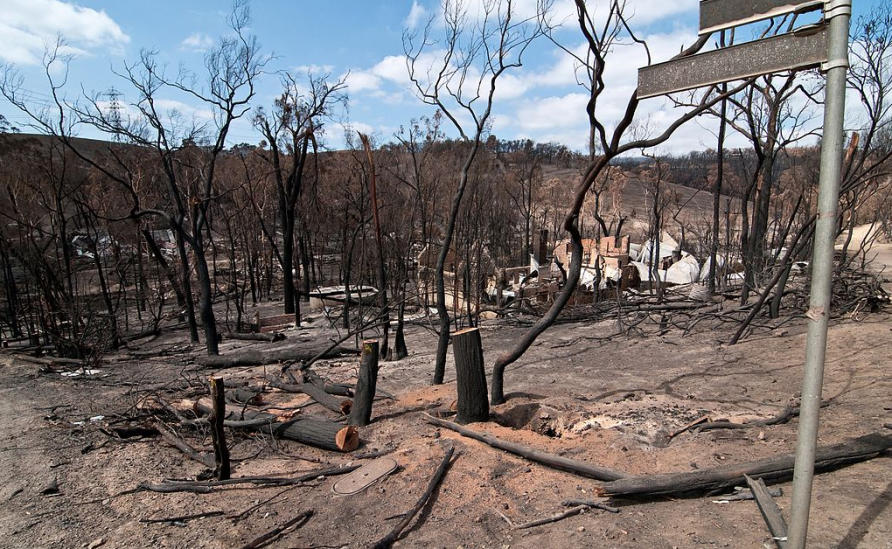Please help us improve PreventionWeb by taking this brief survey. Your input will allow us to better serve the needs of the DRR community.
Australia: Why we must be ready for bushfires this summer
By Dr Graham Dwyer, University of Melbourne
Experts have warned us that there will be more days of catastrophic fire danger across Australia; so much so that government, communities and emergency services continue to be concerned about our ability to cope with bushfires because they are now more complex, unpredictable and ultimately, more harmful than ever.
So, how are we preparing for this scenario?
The good news is that learning from previous bushfires has led to significant innovation in how we deal with them.
It is beyond doubt that the protection of human life sits as the cornerstone of Victoria’s bushfire safety policy. This is reflected in the way our emergency services and communities continue to adopt new ways of working together – whether it be in the conduct of planned burning, predicting fire weather, modeling fire behavior or delivering warnings and information about fire activity.
Consequently, we are now better equipped to prepare for and respond to bushfires. We know this because recent events surrounding the Wye River - Jamieson Track Fire in 2015 clearly show that emergency services and communities across Victoria are forging new partnerships that are focused on saving lives.
Yes, the Wye River Bushfire left part of our landscape devastated. Yes, it was extremely disappointing that we lost 116 homes and yes, the fires caused major damage to infrastructure and businesses. But first and foremost, unlike Black Saturday, we must acknowledge that there was no loss of life when danger unfolded between 19 and 25 December 2015.
We must acknowledge that fire crews took decisive action to back burn ahead of Christmas which helped manage the blaze and prevent further losses.
Most importantly, communities affected by the fire were continually informed by the emergency services through the Incident Management Team of the risk presented by the fire, the changing fire control strategy and the likelihood of an evacuation.
These actions became crucial when the fire broke containment lines because the emergency services and communities were able to work in partnership when the need to evacuate arose on Christmas Day. Undoubtedly, lives were saved because communities and emergency services worked as one when it most counted.
We should never be complacent. It is wrong to have an ingrained belief that we can always prevent bushfires, particularly when we can no longer expect that Black Friday, Ash Wednesday and Black Saturday will be once in-a-generation events.
Victoria is one of the most fire prone areas in the world, which means that preventing bushfires will always be a very risky business as recently shown when a planned burn escaped at Lancefield and quickly became a bushfire which destroyed several homes.
We also need to be careful about where we develop land for housing in case we put residents in harm’s way of bushfires. So much of Victoria’s land continues to be developed and occupied even when bushfire risk is known to be high.
We can’t expect growth area suburbs not to be affected by bushfires in the future and people who choose to live in these areas must educate themselves about the risks they face.
Not knowing is no excuse.
Ever closer partnership between emergency services and communities is the only way forward.
Put simply, households in bushfire risk areas should have a plan and know what they are going to do on a day of high-fire danger and follow that plan. Waiting to see what happens is too passive and too dangerous.
Families, friends and local emergency services need to have the conversation long before a fire arrives and figure out whether they will stay and defend their property or leave early.
While leaving early may be inconvenient, it pales in comparison with what may happen if the decision to leave is left too late.
Our approach to bushfires can, and only ever should be, shared. We need to continue to learn that to implement Victoria’s bushfire safety policy is a shared responsibility.
While mistakes may be made they provide important lessons in planning for the future. Continual learning enables money, time and energy to be spent on improving the practice of emergency management where it matters most - protecting lives.

If we adopt anything less than a shared approach then we run the risk of condemning ourselves to the mistakes of the past. Of greater concern is that siloing our approach to emergency management will lock us into a culture of finger pointing, blame and scapegoating which will in turn prevent us from learning.
It is inevitable another major fire event will occur in Victoria, perhaps even this summer, but let us hope that we continue to learn from past events to know that emergency services and communities must work together.
And while partnerships do seem to be robust between both parties, we need to be clear that there is no excuse for not having a plan. We all must be more active participants in keeping everyone safe – and alive.
Creative Commons Attribution-No Derivatives 3.0 Australia (CC BY-ND 3.0 AU)
Explore further
Please note: Content is displayed as last posted by a PreventionWeb community member or editor. The views expressed therein are not necessarily those of UNDRR, PreventionWeb, or its sponsors. See our terms of use
Is this page useful?
Yes No Report an issue on this pageThank you. If you have 2 minutes, we would benefit from additional feedback (link opens in a new window).